Written by Tiffany on July 15, 2016 |
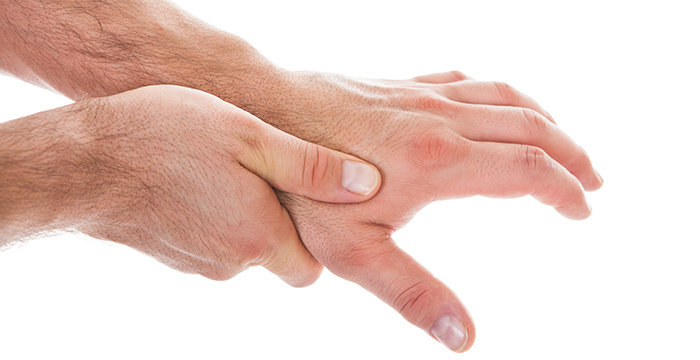
Does it hurt to pinch or grab items, even light ones? Is opening a jar your worst nightmare? Do you have pain and/or inflammation at the base of your thumb and nowhere else? You may have osteoarthritis (OA) in the carpometacarpal (CMC) joint of your thumb. This joint is where your thumb and wrist meet. Most people associate OA with hips or knees, but it can also happen at the base of the thumb.
Continue Reading »
Written by Chelsea on June 29, 2016 |
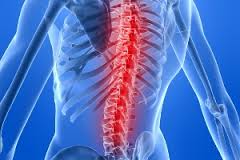
Last week we discussed the “core” and the importance of two specific muscles that make up this group in order to provide spinal stability. We looked specifically last week at the transverse abdominis, and this week we will talk about the multifidus. Continue Reading »
Written by Chelsea on June 22, 2016 |
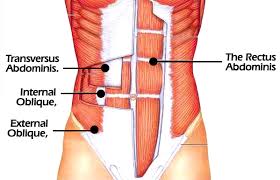 Whenever someone experiences pain in their low back, a phrase often heard is that they need a stronger “core.” The term “core” refers to several muscles primarily in the back/lumbar spine, abdominal region, and pelvis. When looking at the low back specifically, there is less bony stability than in the thoracic spine, which forces our muscles to provide the support needed to protect the low back. Two of the most important muscles in the core that provide this support are the transverse abdominis and the multifidus. These muscles act as a “back brace” (in addition to other core muscles) to help provide adequate spinal stability.
Whenever someone experiences pain in their low back, a phrase often heard is that they need a stronger “core.” The term “core” refers to several muscles primarily in the back/lumbar spine, abdominal region, and pelvis. When looking at the low back specifically, there is less bony stability than in the thoracic spine, which forces our muscles to provide the support needed to protect the low back. Two of the most important muscles in the core that provide this support are the transverse abdominis and the multifidus. These muscles act as a “back brace” (in addition to other core muscles) to help provide adequate spinal stability.
Continue Reading »
Written by Chelsea on June 15, 2016 |
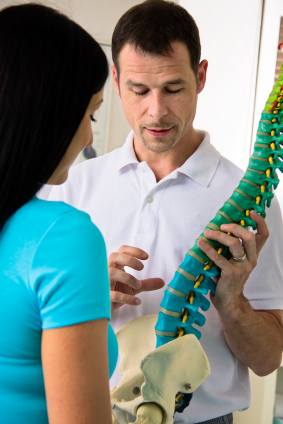 Walking into a physical therapy evaluation can sometimes seem a little overwhelming if you do not know what to expect and have never completed therapy before. Although each therapist treats a little bit differently, here are some general guidelines that you can expect on your very first visit with a therapist at ProActive Physical Therapy.
Walking into a physical therapy evaluation can sometimes seem a little overwhelming if you do not know what to expect and have never completed therapy before. Although each therapist treats a little bit differently, here are some general guidelines that you can expect on your very first visit with a therapist at ProActive Physical Therapy.
Continue Reading »
Written by Chelsea on June 8, 2016 |
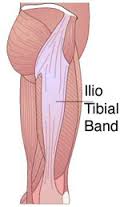 The IT-band (or iliotibial band) runs from the top of the pelvis, or ilium, and extends all the way down the outside of the thigh to the top of the lower leg, or tibia. In the thigh, it also connects to your glutes and tensor fascia latae muscles, and as it travels downward, has fibers that blend into your knee cap as well. The IT-band is made up of very dense connective tissue, making it extremely strong to provide stability during weight bearing activity. Functionally speaking, when we bend and straighten our knee repetitively (i.e. during running), the band slides back and forth and can sometimes cause localized irritation or inflammation. This can result in a very common sports related injury called IT-band syndrome. Symptoms can be felt anywhere along the IT-band, but usually occur closer to the attachment near the lateral knee. Muscle imbalances, like tight hip flexors or weak hip rotators, can often times be the cause of developing IT-band syndrome.
The IT-band (or iliotibial band) runs from the top of the pelvis, or ilium, and extends all the way down the outside of the thigh to the top of the lower leg, or tibia. In the thigh, it also connects to your glutes and tensor fascia latae muscles, and as it travels downward, has fibers that blend into your knee cap as well. The IT-band is made up of very dense connective tissue, making it extremely strong to provide stability during weight bearing activity. Functionally speaking, when we bend and straighten our knee repetitively (i.e. during running), the band slides back and forth and can sometimes cause localized irritation or inflammation. This can result in a very common sports related injury called IT-band syndrome. Symptoms can be felt anywhere along the IT-band, but usually occur closer to the attachment near the lateral knee. Muscle imbalances, like tight hip flexors or weak hip rotators, can often times be the cause of developing IT-band syndrome.
So what are the best ways to treat IT-band syndrome?
First, make sure to address any muscle imbalances by getting into a regular stretching and strengthening routine. A physical therapist can help identify specifically which muscle groups you should address to improve overall mobility and stability. Make sure you address the overall mobility of the IT-band as well by using products like a foam roller or massage stick. These products can be used regularly to help treat and prevent further irritation.
Secondly, make sure you have proper footwear. A lack of proper support in your foot can affect the forces in in your knee and hip and contribute to muscle imbalances related to IT-band syndrome.
Finally, make sure you get into a routine of regularly icing the affected area for 15-20 minutes to treat any localized inflammation.
Written by Dana on May 18, 2016 |
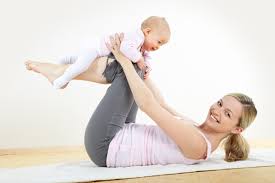
The female body goes through many physical changes during pregnancy and after childbirth. We all know about added body weight during and after pregnancy. Lesser known changes include weakness of the upper and lower abdominal muscles, lumbar and sacral pain and dysfunction, bladder dysfunction and foot problems.
Getting back into shape after childbirth can be a challenge. Physically, the mother has recently experienced a grueling workout, also known as labor. Episiotomies or Caesarian sections complicate the recovery process. Time and energy used for working out suddenly become directed towards child care and nurturing. Sleep deprivation from nighttime feedings and diaper changes also interrupts the energy and time for exercise.
There are therapists at Proactive for Physical Therapy and Sports Medicine who specialize in women’s health issues. Back pain, muscle weakness, and returning to good health are the areas physical therapy can help. Gone are the days when a new mother was expected to suffer through this challenging, joyful and sometimes painful time.
Written by Dana on May 11, 2016 |
 Like me, you were probably reminded by your parents to stop slouching and to sit up straight. At Proactive For Physical Therapy and Sports Medicine, we encourage our clients to sit and stand up straight. We then show our clients how to accomplish this and instruct them why this is important. In addition to aesthetic reasons, there are also anatomical reasons for proper postural alignment.
Like me, you were probably reminded by your parents to stop slouching and to sit up straight. At Proactive For Physical Therapy and Sports Medicine, we encourage our clients to sit and stand up straight. We then show our clients how to accomplish this and instruct them why this is important. In addition to aesthetic reasons, there are also anatomical reasons for proper postural alignment.
Continue Reading »
Written by Dana on May 4, 2016 |
 The physical therapists at Proactive for Physical Therapy and Sports Medicine have been seeing a growing trend of computer operators developing pain. The public is generally familiar itch carpal tunnel syndrome developing as a result of excessive computer use. Less well known are a variety of overuse syndromes affecting the arms, shoulders, head and neck and back pain from continuous computer use.
The physical therapists at Proactive for Physical Therapy and Sports Medicine have been seeing a growing trend of computer operators developing pain. The public is generally familiar itch carpal tunnel syndrome developing as a result of excessive computer use. Less well known are a variety of overuse syndromes affecting the arms, shoulders, head and neck and back pain from continuous computer use.
The common factors that physical therapists see in their clients with overuse syndromes are:
Continue Reading »
Written by Jade on April 27, 2016 |
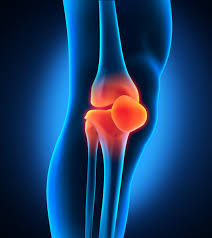 Often times, people have knee pain and don’t know what is wrong. A common knee injury is a meniscus tear. There are two menisci in each knee, a medial and lateral. The role of the meniscus is to transmit central comprehensive loads out towards the periphery to decrease contact pressure to the articular cartilage in the knee. 50% of the compressive load passes through the menisci with the knee in full extension. 85% of the load passes through the knee when it is flexed at 90 degrees. Due to this a sudden pivot, turn, deep squat or heavy lifting are some causes of a meniscal tear.
Often times, people have knee pain and don’t know what is wrong. A common knee injury is a meniscus tear. There are two menisci in each knee, a medial and lateral. The role of the meniscus is to transmit central comprehensive loads out towards the periphery to decrease contact pressure to the articular cartilage in the knee. 50% of the compressive load passes through the menisci with the knee in full extension. 85% of the load passes through the knee when it is flexed at 90 degrees. Due to this a sudden pivot, turn, deep squat or heavy lifting are some causes of a meniscal tear.
Continue Reading »
Written by Jade on April 20, 2016 |
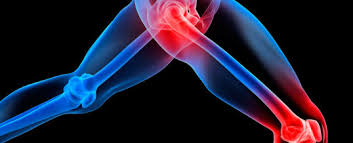 Over 23 million people participate in the sport of Golf. 6.2 million of those individuals are over the age of 65. Many people have total hip replacements and are unsure if they are able to golf again. YES, you can play golf again! There are many injuries that can occur from overuse playing golf. Injuring the lower extremity can make an effect on participation. 78.9% of people, report altered performance after an injury.
Over 23 million people participate in the sport of Golf. 6.2 million of those individuals are over the age of 65. Many people have total hip replacements and are unsure if they are able to golf again. YES, you can play golf again! There are many injuries that can occur from overuse playing golf. Injuring the lower extremity can make an effect on participation. 78.9% of people, report altered performance after an injury.
Continue Reading »




 Whenever someone experiences pain in their low back, a phrase often heard is that they need a stronger “core.” The term “core” refers to several muscles primarily in the back/lumbar spine, abdominal region, and pelvis. When looking at the low back specifically, there is less bony stability than in the thoracic spine, which forces our muscles to provide the support needed to protect the low back. Two of the most important muscles in the core that provide this support are the transverse abdominis and the multifidus. These muscles act as a “back brace” (in addition to other core muscles) to help provide adequate spinal stability.
Whenever someone experiences pain in their low back, a phrase often heard is that they need a stronger “core.” The term “core” refers to several muscles primarily in the back/lumbar spine, abdominal region, and pelvis. When looking at the low back specifically, there is less bony stability than in the thoracic spine, which forces our muscles to provide the support needed to protect the low back. Two of the most important muscles in the core that provide this support are the transverse abdominis and the multifidus. These muscles act as a “back brace” (in addition to other core muscles) to help provide adequate spinal stability. Walking into a physical therapy evaluation can sometimes seem a little overwhelming if you do not know what to expect and have never completed therapy before. Although each therapist treats a little bit differently, here are some general guidelines that you can expect on your very first visit with a therapist at ProActive Physical Therapy.
Walking into a physical therapy evaluation can sometimes seem a little overwhelming if you do not know what to expect and have never completed therapy before. Although each therapist treats a little bit differently, here are some general guidelines that you can expect on your very first visit with a therapist at ProActive Physical Therapy. The IT-band (or iliotibial band) runs from the top of the pelvis, or ilium, and extends all the way down the outside of the thigh to the top of the lower leg, or tibia. In the thigh, it also connects to your glutes and tensor fascia latae muscles, and as it travels downward, has fibers that blend into your knee cap as well. The IT-band is made up of very dense connective tissue, making it extremely strong to provide stability during weight bearing activity. Functionally speaking, when we bend and straighten our knee repetitively (i.e. during running), the band slides back and forth and can sometimes cause localized irritation or inflammation. This can result in a very common sports related injury called IT-band syndrome. Symptoms can be felt anywhere along the IT-band, but usually occur closer to the attachment near the lateral knee. Muscle imbalances, like tight hip flexors or weak hip rotators, can often times be the cause of developing IT-band syndrome.
The IT-band (or iliotibial band) runs from the top of the pelvis, or ilium, and extends all the way down the outside of the thigh to the top of the lower leg, or tibia. In the thigh, it also connects to your glutes and tensor fascia latae muscles, and as it travels downward, has fibers that blend into your knee cap as well. The IT-band is made up of very dense connective tissue, making it extremely strong to provide stability during weight bearing activity. Functionally speaking, when we bend and straighten our knee repetitively (i.e. during running), the band slides back and forth and can sometimes cause localized irritation or inflammation. This can result in a very common sports related injury called IT-band syndrome. Symptoms can be felt anywhere along the IT-band, but usually occur closer to the attachment near the lateral knee. Muscle imbalances, like tight hip flexors or weak hip rotators, can often times be the cause of developing IT-band syndrome.
 Like me, you were probably reminded by your parents to stop
Like me, you were probably reminded by your parents to stop  The physical therapists at Proactive for Physical Therapy and Sports Medicine have been seeing a growing trend of computer operators developing pain. The public is generally familiar itch carpal tunnel syndrome developing as a result of excessive computer use. Less well known are a variety of overuse syndromes affecting the arms, shoulders, head and neck and back pain from continuous computer use.
The physical therapists at Proactive for Physical Therapy and Sports Medicine have been seeing a growing trend of computer operators developing pain. The public is generally familiar itch carpal tunnel syndrome developing as a result of excessive computer use. Less well known are a variety of overuse syndromes affecting the arms, shoulders, head and neck and back pain from continuous computer use. Often times, people have knee pain and don’t know what is wrong. A common knee injury is a meniscus tear. There are two menisci in each knee, a medial and lateral. The role of the meniscus is to transmit central comprehensive loads out towards the periphery to decrease contact pressure to the articular cartilage in the knee. 50% of the compressive load passes through the menisci with the knee in full extension. 85% of the load passes through the knee when it is flexed at 90 degrees. Due to this a sudden pivot, turn, deep squat or heavy lifting are some causes of a meniscal tear.
Often times, people have knee pain and don’t know what is wrong. A common knee injury is a meniscus tear. There are two menisci in each knee, a medial and lateral. The role of the meniscus is to transmit central comprehensive loads out towards the periphery to decrease contact pressure to the articular cartilage in the knee. 50% of the compressive load passes through the menisci with the knee in full extension. 85% of the load passes through the knee when it is flexed at 90 degrees. Due to this a sudden pivot, turn, deep squat or heavy lifting are some causes of a meniscal tear. Over 23 million people participate in the sport of Golf. 6.2 million of those individuals are over the age of 65. Many people have total hip replacements and are unsure if they are able to golf again. YES, you can play golf again! There are many injuries that can occur from overuse playing golf. Injuring the lower extremity can make an effect on participation. 78.9% of people, report altered performance after an injury.
Over 23 million people participate in the sport of Golf. 6.2 million of those individuals are over the age of 65. Many people have total hip replacements and are unsure if they are able to golf again. YES, you can play golf again! There are many injuries that can occur from overuse playing golf. Injuring the lower extremity can make an effect on participation. 78.9% of people, report altered performance after an injury.